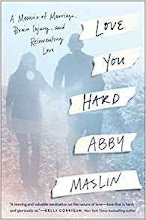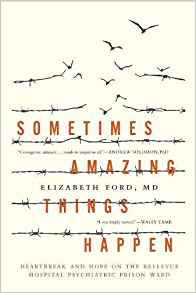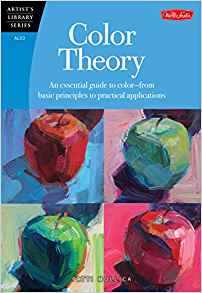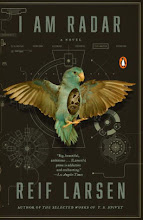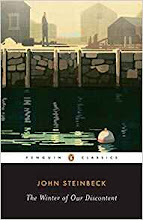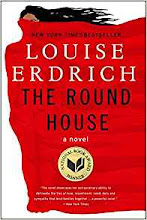skip to main |
skip to sidebar
Some might say it was an unusual gathering. Women with big '80s hair; a handful of biker types, their snow-white hair in long braids; nerdy, pocket protector guys; the occasional handsome loner; and plenty of average joes to round out the crowd - all united by their love of the Native American Flute (NAF) at the Fifth Annual (and my second) Potomac Native American Flute Festival this past weekend. They came from the D.C. area, West Virginia, Ohio, and Pennsylvania, toting a lone favorite flute or a quiver made especially for multiple flutes.
Flute players are generally an upbeat crowd, and after the first day was canceled due to inclement weather, they were even more excited to start on Saturday morning. I attended a practical workshop on breathing by Jan Seiden, who did biomedical research before discovering the NAF and who now gives workshops and presentations, plays concerts, and records. Her workshop recalled previous training I'd had in both voice lessons and karate, so I was able to draw on those experiences and found it a helpful refresher with a new application. Then I went to a workshop on "looping," or recording layered rhythm accompaniment tracks. You could sense people's interests being piqued as their minds opened up to taking their flute playing to a new level, previously unconsidered.
After shopping among the various flute vendors throughout the morning and agonizing between an F# and a C flute I'd tried, I returned to Lone Crow Flutes and bought the C from Leonard McGann, about as friendly a guy as you could hope for as the maker of your first serious flute. He told me about making my flute, showing me the detailed woodburning around t he circumference, and he gave me some playing tips. It's a beautiful instrument made of poplar, with Eastern red cedar endcaps and gorgeous purple heart inlays in both the endcaps and "bird" (the block strapped to the top that forms the air channel between the air chamber and sound chamber). (The moccasin in the photo is my feeble attempt at providing scale.)
he circumference, and he gave me some playing tips. It's a beautiful instrument made of poplar, with Eastern red cedar endcaps and gorgeous purple heart inlays in both the endcaps and "bird" (the block strapped to the top that forms the air channel between the air chamber and sound chamber). (The moccasin in the photo is my feeble attempt at providing scale.)
The sound is low, round, and resonant, a big brother to the child of my high A flute. The right hand finger holes are spaced a little further apart than I'm used to, but Leonard says I'll adjust.
The other flute maker I spent a lot of time with was Brent Haines, of Woodsounds. His flutes are absolute works of art. The first thing you notice is the almost otherworldly beauty of the wood; never before have I seen so much variety in color or pattern of woodgrain, and some flutes have turquoise inlaid in the gaps and fissures of the wood. One of the most distinctive and naturally attractive features was the jagged, uneven end of some, looking like they had just fallen to the forest floor after centuries of standing tall. They are all finished with a glossy polymer that highlights the wood, gives a silky feel to the player, and protects the flute with a tortoise shell hardness (not to mention uniquely allowing the mouthpiece to be cleaned with an alcohol swab).
and naturally attractive features was the jagged, uneven end of some, looking like they had just fallen to the forest floor after centuries of standing tall. They are all finished with a glossy polymer that highlights the wood, gives a silky feel to the player, and protects the flute with a tortoise shell hardness (not to mention uniquely allowing the mouthpiece to be cleaned with an alcohol swab).
But of course the true glory is their incredibly rich sound. From the very first note you can tell they are very special. The volume, control, and color you can produce is amazing, and the proof can be seen in the long list of recording artists who play these flutes (and in how difficult I found it to stop trying them out). One day I'll have my own!
Now I know why every flute is so special to NAF artists. In songbooks you might find a notation of the type of flute used for the song (e.g., "Spanish Cedar Left-Handed F#"). At concerts, the player might identify not only the kind of wood but also the maker and even say something more about it. Even a year ago, I didn't fully appreciate this practice, but now I understand. Much like pianos, every flute feels, plays, and sounds different. You become intimately familiar with its strengths and quirks, and you also develop a relationship with the maker. Each flute is unique to the owner by virtue of this combination, so it's only natural to want to talk about it with people who share your passion.
The Saturday night concert was given by none other than R. Carlos Nakai, THE premier Native American Flute recording artist in the country. No one else has done as much to revive and  reinvigorate Native American Flute music, and it was a thrill and an honor to have him play for us. I already owned three of his CDs and learned how to play from his book, so I was very excited to hear him live and also to stand in line for an autograph of my fourth CD. Besides playing solo flute for the evening, he talked to us seemingly about whatever came to mind in a gentle, relaxed spirit that made you feel not only that he had all the time in the world, but that you did, too.
reinvigorate Native American Flute music, and it was a thrill and an honor to have him play for us. I already owned three of his CDs and learned how to play from his book, so I was very excited to hear him live and also to stand in line for an autograph of my fourth CD. Besides playing solo flute for the evening, he talked to us seemingly about whatever came to mind in a gentle, relaxed spirit that made you feel not only that he had all the time in the world, but that you did, too.
I must be part Native American. When my brother and I were kids, we were in the YMCA Indian Guides with our dad. I absolutely loved it: choosing an Indian name (I think my name was "Day Owl" and my dad's was "Night Owl," but given my habits, I don't think he'd mind if I appropriated his name for my own use), woodburning and then wearing our nametags around our necks, going to meetings and earning feathers for our headbands, learning animal tracks and Indian symbols. Far from being corny, it taught me respect for Native Americans. Years later, when I started sending Christmas cards, I would send only Leanin' Tree cards, which depicted scenes of cowboys around campfires, birds and squirrels gathering around pine trees, and Indians on horseback, looking up to the sky. The only ones I was attracted to were those showing reverential scenes of Native Americans connecting with the Great Spirit. At my church today, we pray the Lord's Prayer in its many versions from around the world, and I always want to use the Native American version. And for the past two years I have been in love with the NAF. I already know which flute I am going to buy at next year's festival, and I'm working on a plan to take a Woodsounds flute home with me someday. Beyond that: a rattle, a drum, a looper, microphone, and amplifier?
I don't know why it speaks to me so strongly, but its voice touches me in a deep part of my being seldom accessed any other way. This isn't surprising, given its application in various medical and behavioral therapies. Maybe it really is in my blood; its sound is very close to that of the shakuhachi, or Japanese bamboo flute, which is pentatonic like some NAFs and shares some of its construction characteristics and playing techniques. Whatever the reason, I can't stop thinking about moving to the Southwest, buying an adobe house, and sitting out at night under the stars, playing my flutes to the accompaniment of a crackling fire in the chiminea and coyotes howling in the distance.
In my first year of playing, I was just learning, listening, and trying to understand. Then at my first flute festival, I was awed by Hawk Henries' transcendent, meditative playing. I was electrified by Ron Warren's innovative music and moved by his collaborations with voice and cello. My mind was opened to the unlimited possibilities of NAF playing, and I was inspired to play more and learn as much as I could. And now, after another year, having played many flutes and met their makers and having had the honor of hearing Carlos Nakai play live, I am firmly in the grip of this beautiful instrument.
At the end of his concert, Mr. Nakai said, "Let the journey begin." Mine has.
Photo credits: top - M. Abe, middle - Woodsounds.net, bottom - RCarlosNakai.com
OK, I've done the pinhole in the shoebox thing. It was an amazing thing to see a solar eclipse, albeit indirectly so as not to go blind. But somehow I've always missed lunar eclipses, maybe partly for lack of effort because they aren't as sexy as the dramatic daytime event, but also because they always seem to happen in the middle of the night. Until tonight. Finally we - Mother Earth - are passing between the sun and the moon in late evening, and I am awake and aware of it (instead of slapping my forehead upon reading about it the next day). Not only that, but the moon is visible just outside the kitchen door, unobscured by tall trees or buildings, and the sky is clear after an afternoon snowstorm!
To top it all off, I was reminded of it in Yahoo! news at 10:00 p.m., just as it was beginning. I walked outside, and there it was: the moon's dusty orange tint* and Earth's shadow partially  covering its face. And Saturn and the star Regulus, I am told, are the two bright "stars" near it, like two eyes to the nose of the moon. (Where is my big brother's telescope when you need it?!) What a privilege to witness this event!
covering its face. And Saturn and the star Regulus, I am told, are the two bright "stars" near it, like two eyes to the nose of the moon. (Where is my big brother's telescope when you need it?!) What a privilege to witness this event!
10:30: I go back out, and it's less orange and more dark.
11:00: The moon is now almost completely in shadow, with just a sliver of a white crescent on one side. Even when the eclipse is full, indirect sunlight still reaches the moon after passing through Earth's atmosphere, rendering the whole moon fully visible even at its darkest.
11:15: The eclipse is now starting to end as our shadow continues passing across the moon's face. Almost a quarter is now the bright white we are used to seeing.
I took Astronomy as an undergrad (in partial fulfillment of a science requirement), and my jaw dropped regularly as I read incredible things about the universe, things that I swore had to have been fabricated by the textbook authors. Not only were they fantastic to consider, but the methods of discovery seemed unknowable. Even if these things were true, how could anyone explore, study, and analyze phenomena that were light years away? (And who was naming these things, anyway, and cataloging them?)
This course (as well as anatomy and physiology many years later, as I prepared for grad school) made me wonder how anyone could possibly not believe in God.
11:29: Half moon. I'm calling it a night. The next one is December 20, 2010. Plenty of time to check Consumer Reports for telescopes.
Photo credits: AP
* Maybe Snoopy was right; maybe the moon is made of American cheese.
Last night I attended a panel discussion that was part of the PEN/Faulkner Reading Series at the Folger Shakespeare Theatre. The theme was "Imagination  as Subversion in Nonfiction and Memoir." One of the panelists was Azar Nafisi, who wrote Reading Lolita in Tehran, A Memoir in Books, which chronicled the seminar in Western literature that she hosted for female students from the University of Tehran just after the
as Subversion in Nonfiction and Memoir." One of the panelists was Azar Nafisi, who wrote Reading Lolita in Tehran, A Memoir in Books, which chronicled the seminar in Western literature that she hosted for female students from the University of Tehran just after the Ayatollah Khomeini came into power. I had read it a few years ago, and I was excited to hear her speak.
Ayatollah Khomeini came into power. I had read it a few years ago, and I was excited to hear her speak.
Along with writers Daniel Mendelsohn and Samantha Power, she discussed how imagination could be used as a tool of resistance. Mendelsohn had to imagine the experiences of Holocaust victims as he reconstructed what happened to them, and Power had uncannily similar experiences in her own writing about oppression and war in Iraq and Darfur. Far from being a light conversation, the panel almost immediately focused on foreign policy and international or cultural conflict.
Nafisi, now director of the SAIS Dialogue Project at the Foreign Policy Institute of Johns Hopkins University's School of Advanced International Studies, said that one reason that genocide is allowed to happen is that people in other countries fail to imagine that the victims are anything like them; they think only that those people are so totally different, and that somehow makes the news easier to swallow. Mendelsohn pointed out that imagination is not always benign; the Nazis imagined all sorts of new (and "unimaginable") ways to torture and kill the Jews. He prefers the term "inventive" as distinguished from "imaginative," which has customarily had a more positive connotation.
During the post-discussion reception, I met Ms. Nafisi and asked her about her former students and whether they appreciated the subversiveness of meeting to talk about such American classics as Lolita, The Great Gatsby, and Washington Square. She was unabashedly warm and friendly in her response, and it was exciting having this brief but personal encounter.
As I walked out with my friend Mike and two of his friends, he said that whenever he came out of the Folger, looked west down East Capitol Street, and saw the Capitol dome lit up against the black sky, it was a surreal moment because it looked like a postcard. We agreed that it was an amazing sight.
I walked the two blocks to the Capitol. I've always considered it one of the most beautiful buildings I've ever seen, and I felt grateful to Mike for reminding me of its awesome presence. I turned left onto First Street, the Capitol on my right, the Library of Congress on my left. My favorite fountain in D.C., that of Neptune and his mermaids and wildly flailing horses, was dry and statuesque in the brisk night air. (This is what it looks like in the afternoon, with the fountain on full.)
brisk night air. (This is what it looks like in the afternoon, with the fountain on full.)
I had the sidewalk almost all to myself, though it wasn't that late, and as I walked past the Cannon House Office Building - the halls of which I had walked as a Senate intern 25 years ago - I was so appreciative of the opportunity to be with such accomplished writers in such a beautiful venue as the Folger Theatre in such an exciting city as Washington. Literature and writing may not be the first things you associate with D.C., but this is a stimulating place for both readers and writers.
Photo credits: top: PEN/Faulkner, bottom: Mark Abe
Why is there such an intense focus on drugs when a celebrity dies? Yes, Heath Ledger was found face-down on his bed (and yes, naked, although the relevance of that information escapes me), with bottles of prescription drugs around him.  And understandably, the public wants to know why the presumably healthy 28 year-old actor and father died. But why can't we just report the basic facts and wait until the toxicology report comes back before saying anything more? Let the Ledger family and Heath's fans grieve, and allow Heath some dignity in death.
And understandably, the public wants to know why the presumably healthy 28 year-old actor and father died. But why can't we just report the basic facts and wait until the toxicology report comes back before saying anything more? Let the Ledger family and Heath's fans grieve, and allow Heath some dignity in death.
It is thought that Heath Ledger was only the last in a long line of young celebrities to die of a drug overdose. River Phoenix died of an overdose of heroin and cocaine at 23. He had hinted at suffering from sexual abuse as a child at the hands of members of his parents' cult, the Children of God, and has been remembered for saying "I wish sometimes that I wasn't as conscious as I am." Kurt Cobain died at 27 of an overdose of heroin and a self-inflicted gunshot to the head. He battled chronic bronchitis and pain, which led to emotional problems and drug addiction. And there have been others, of course, but of those who have died before age 30, plenty have been due to accidents or illness. Drugs, I guess, are sexier media fodder, drawing public attention for their mystery or illicitness - never mind that most of the drugs on Heath's bed have been advertised on TV during the dinner hour.Heath Ledger was a gifted actor, perhaps best known for his role as the brooding Ennis Del Mar in the film "Brokeback Mountain." It was a phenomenal performance, full of emotional nuance and depth, winning him the American Film Institute award for Best Lead Actor, as well as Academy Award, Golden Globe, BAFTA Award, and SAG nominations in the same category. Never before has so much been communicated with so few words or such spare body language (or mouth movement). His role could not be reduced to just a "gay cowboy"; rather, he simply played a man dealing with his love and attraction for another man in a difficult time and setting. And while he was not gay himself, Heath Ledger did gay men everywhere a great service in his wholehearted, genuine, unapologetic portrayal. His Ennis was as masculine as the Marlboro Man, undoing what some might have thought was the damage wrought by such films as "The Birdcage" (1996), "To Wong Foo Thanks For Everything, Julie Newmar" (1995), and "The Adventures of Priscilla, Queen of the Desert" (1994) which were (and continue to be) enjoyed within the gay community but which also perpetuated the stereotype of the gay man as a flaming, effeminate homosexual, drag queen, or transvestite.
performance, full of emotional nuance and depth, winning him the American Film Institute award for Best Lead Actor, as well as Academy Award, Golden Globe, BAFTA Award, and SAG nominations in the same category. Never before has so much been communicated with so few words or such spare body language (or mouth movement). His role could not be reduced to just a "gay cowboy"; rather, he simply played a man dealing with his love and attraction for another man in a difficult time and setting. And while he was not gay himself, Heath Ledger did gay men everywhere a great service in his wholehearted, genuine, unapologetic portrayal. His Ennis was as masculine as the Marlboro Man, undoing what some might have thought was the damage wrought by such films as "The Birdcage" (1996), "To Wong Foo Thanks For Everything, Julie Newmar" (1995), and "The Adventures of Priscilla, Queen of the Desert" (1994) which were (and continue to be) enjoyed within the gay community but which also perpetuated the stereotype of the gay man as a flaming, effeminate homosexual, drag queen, or transvestite.
The toxicology report will be out soon, and then perhaps we'll know more about why Health Ledger died. Until then, can we not just acknowledge his artistic accomplishments and mourn the loss of a young, talented actor who did not seek the spotlight in his personal life, who apparently rejected stardom in Hollywood and just did his art?
Photo credits: top: Wikipedia.org, bottom: IMDb.com
 he circumference, and he gave me some playing tips. It's a beautiful instrument made of poplar, with Eastern red cedar endcaps and gorgeous purple heart inlays in both the endcaps and "bird" (the block strapped to the top that forms the air channel between the air chamber and sound chamber). (The moccasin in the photo is my feeble attempt at providing scale.)
he circumference, and he gave me some playing tips. It's a beautiful instrument made of poplar, with Eastern red cedar endcaps and gorgeous purple heart inlays in both the endcaps and "bird" (the block strapped to the top that forms the air channel between the air chamber and sound chamber). (The moccasin in the photo is my feeble attempt at providing scale.) and naturally attractive features was the jagged, uneven end of some, looking like they had just fallen to the forest floor after centuries of standing tall. They are all finished with a glossy polymer that highlights the wood, gives a silky feel to the player, and protects the flute with a tortoise shell hardness (not to mention uniquely allowing the mouthpiece to be cleaned with an alcohol swab).
and naturally attractive features was the jagged, uneven end of some, looking like they had just fallen to the forest floor after centuries of standing tall. They are all finished with a glossy polymer that highlights the wood, gives a silky feel to the player, and protects the flute with a tortoise shell hardness (not to mention uniquely allowing the mouthpiece to be cleaned with an alcohol swab). reinvigorate Native American Flute music, and it was a thrill and an honor to have him play for us. I already owned three of his CDs and learned how to play from his book, so I was very excited to hear him live and also to stand in line for an autograph of my fourth CD. Besides playing solo flute for the evening, he talked to us seemingly about whatever came to mind in a gentle, relaxed spirit that made you feel not only that he had all the time in the world, but that you did, too.
reinvigorate Native American Flute music, and it was a thrill and an honor to have him play for us. I already owned three of his CDs and learned how to play from his book, so I was very excited to hear him live and also to stand in line for an autograph of my fourth CD. Besides playing solo flute for the evening, he talked to us seemingly about whatever came to mind in a gentle, relaxed spirit that made you feel not only that he had all the time in the world, but that you did, too.






